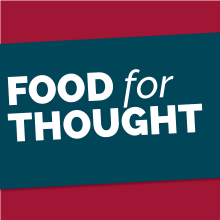
Only Connect
“Only connect.” That was Margaret Schlegel’s advice to Henry Wilcox in E. M. Forster’s slightly pretentious novel Howard’s EndHowa, long before it was Victoria Coren Mitchell’s advice to eccentric BBC triviaphiles in the slightly pretentious quiz game of the same name. The two women mean rather different things by the advice, I suspect.
I have long been interested in the idea of making intellectual connections. It is arguable that all cognitive skills essentially boil down to being able to ‘spot the difference’ and being able to ‘spot the similarity’. These two exercises are the basis of analysis. ‘Diversitas requirit distinctionem’, as Thomas Aquinas put it, with characteristic bonhomie: difference demands distinction.
But equally, isomorphism (broadly, ideas having the same conceptual shape) is the foundation not just of a lot of maths (think, similar triangles), but also generally how we learn about the world – even in human, social ways. At a party once, I made the mistake of introducing myself twice to the same girl, having completely forgotten her in the intervening 15-minutes. I didn’t spot the isomorphism between the girl I was talking to now and the girl I had talked to a quarter of an hour before. It didn’t end well. I failed to make a connection. Now, if I ever get invited to a party again, I’ll know not to make that mistake. I’ve learned – “This situation is like that situation: apply what you know” (is the pep talk that I’d give myself beforehand, if I were ever invited to another party). That’s the power of isomorphism.
Syllogistic logic (arguing from two premises to a conclusion) is one of the things we have been learning about in Food for Thought seminars. This logical process is also about making connections between different things. Take this example:
Premise 1: Anyone with a beard and leather patches on his tweed jacket is an English teacher.
Premise 2: Dr Baker has a beard and leather patches on his tweed jacket.
Conclusion: Dr Baker is a (sort of) English teacher.
You’ll notice that one of the terms appears in both premises, but doesn’t appear in the conclusion (the beard and leather patches on the tweed jacket). That is what we call the ‘middle term’: it connects the other two terms so that in the conclusion we can link those two together directly.
There has for a long time been a lot of debate in educational circles about ‘knowledge’ versus ‘skills’, and which is more important. For me, you may as well ask if light is a wave or a particle (you really may as well – I’m not a physicist!). Personally, I like the analogy that what we think of as a skill is like an old-fashioned movie reel: a string of individual ‘stills’ of knowledge, which, if connected together with sufficient speed and automaticity, turns into a moving video. Working out the order in which to connect the ‘stills’ and being able to connect them fluently, that’s what turns knowledge into skill.
So, for a bit of fun heading into the Easter holidays, here’s a connections wall for you to have a go at (parents, you may well need your children to help you with this!). There are four groups, and each is in some way to do with Denstone College. You have three minutes. Good luck, have a lovely Easter break, and find some time to re-connect with each other!





.jpg&command_2=resize&height_2=85)





.jpg&command_2=resize&height_2=85)











-2.jpg&command_2=resize&height_2=85)
